Reputedly a more restrained passion vine, a young Passiflora loefgrenii, the Garlic Passion Flower, gives an exciting, tightly coiled performance its first year even when not in bloom.
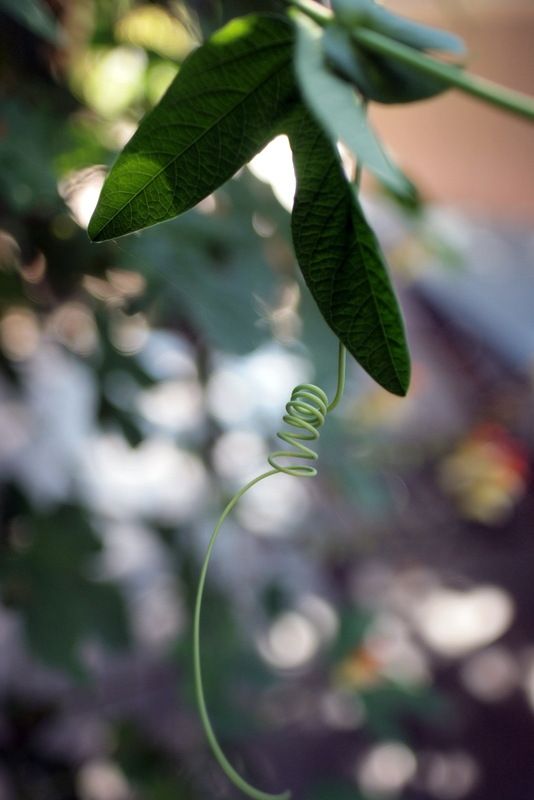

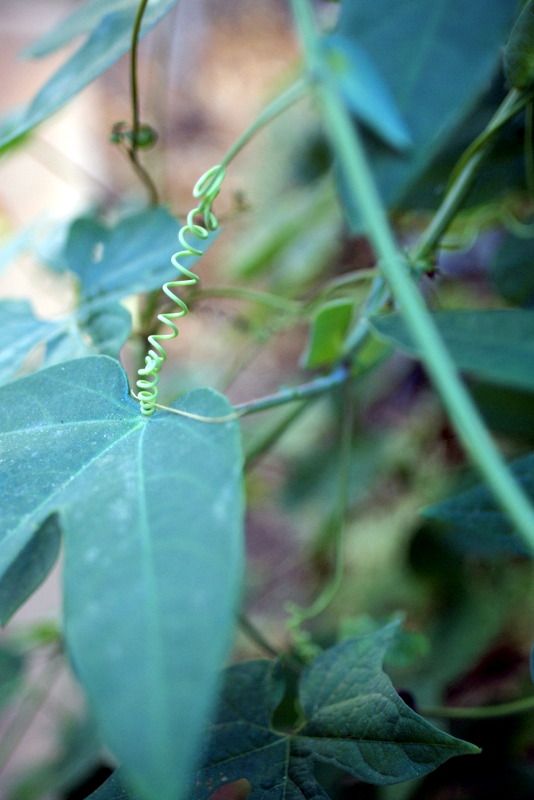
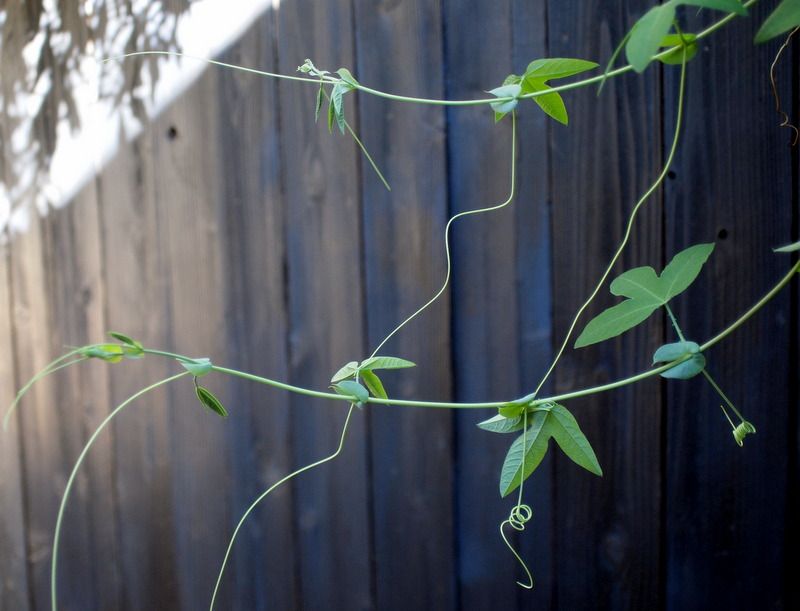
Now imagine this with passionflowers. Hurry, summer 2013!
Reputedly a more restrained passion vine, a young Passiflora loefgrenii, the Garlic Passion Flower, gives an exciting, tightly coiled performance its first year even when not in bloom.




Now imagine this with passionflowers. Hurry, summer 2013!
Offramp Gallery – November 18 – December 23, 2012
Opening Reception: Sunday, November 18, 2-5pm
Closing Reception & Holiday Party: Sunday, December 23, 2-5pm
1702 Lincoln Avenue | Pasadena, CA 91103 | 626-298-6931
Artists Sue Dadd and James Griffith seem to invariably have both their names spoken in the same breath.
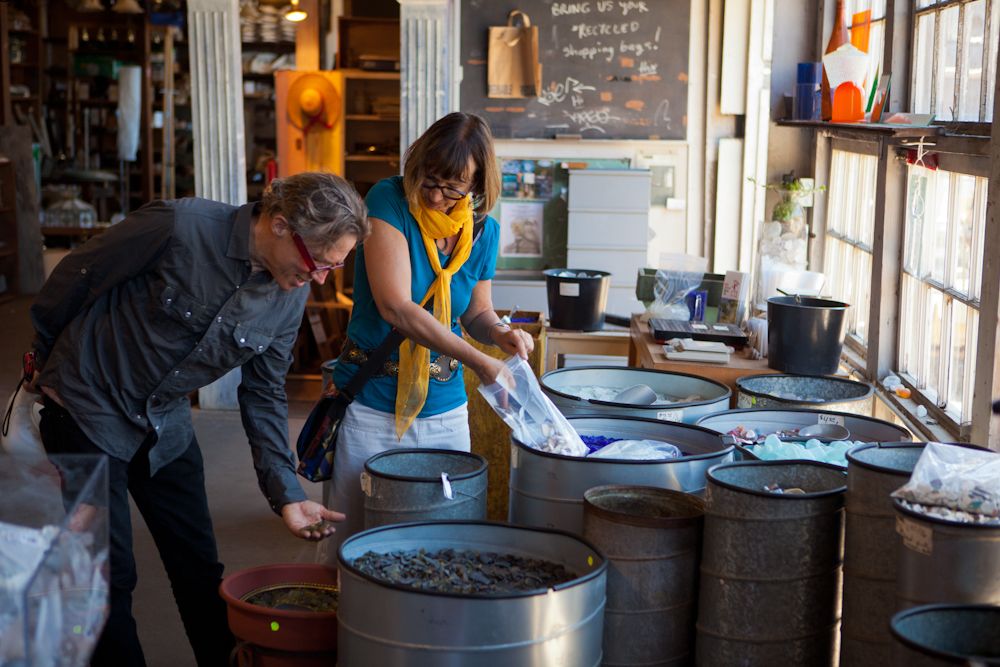
Bagging some glass mulch at Building Resources in San Francisco.
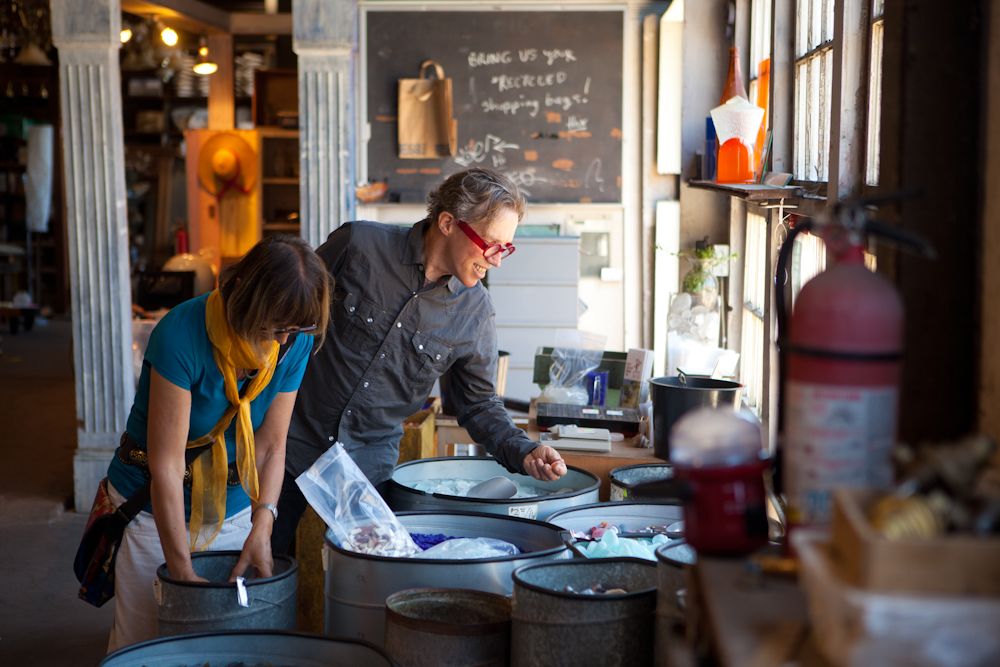
It’s only natural, since they are an exceedingly charming couple.
But their extraordinary achievement, the amphitheater they created and named the “Folly Bowl,” might also be partially responsible for this reflexive joining of their names.
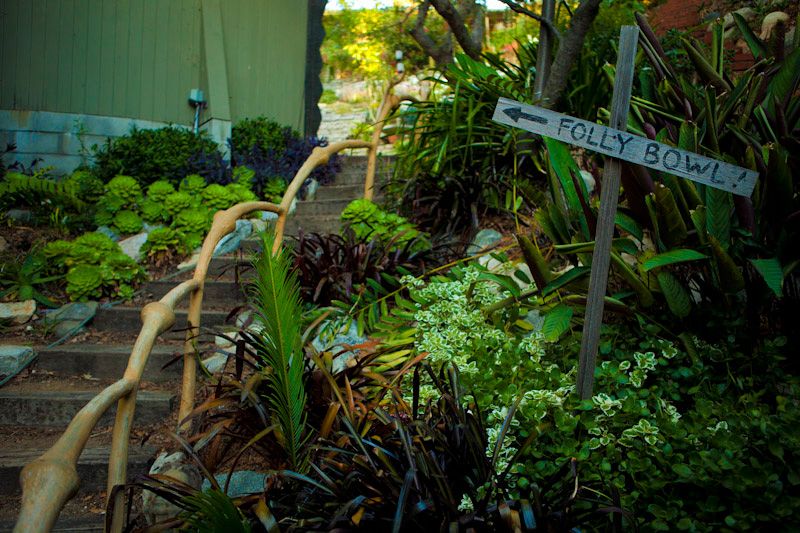
From Wikipedia: “Patronage is the support, encouragement, privilege, or financial aid that an organization or individual bestows to another.”
New York City’s Central Park has found a patron to rival the Medicis. Hedge fund manager John. A. Paulson has gifted Central Park $100 million.

photo by Fred R. Conrad/The New York Times
It’s about time that parks saw some major philanthropic action too.
“Asked what prompted the gift, he said: ‘Walking through the park in different seasons, it kept coming back that, in my mind, Central Park is the most deserving of all of New York’s cultural institutions. And I wanted the amount to make a difference. The park is very large, and its endowment is relatively small.’” — A $100 Million Thank-You for a Lifetime’s Central Park Memories, Lisa Foderaro, The New York Times, 10/23/12.
From the Central Park Conservancy website: “Eighty-five percent of Central Park’s $46 million annual expense budget comes from private donations. Central Park has received an unprecedented gift of $100 million from John A. Paulson and the Paulson Family Foundation to help sustain the progress we’ve made since 1980 and ensure that generations to come will be able to make their own memories here.”
New York City parks are really feeling the love lately. What a roll they’ve been on the past couple years:
“The gift is the latest in a year in which city parks emerged as major beneficiaries of philanthropy, joining more traditional recipients like museums, hospitals and universities. A year ago, the Diller-von Furstenberg Family Foundation pledged $20 million to the High Line, the elevated park on the West Side of Manhattan; that donation followed two other gifts to the High Line from the foundation, totaling $15 million. In April, Joshua P. Rechnitz, an amateur track cyclist, announced a gift of $40 million to Brooklyn Bridge Park to build a field house with a cycling track.” — A $100 Million Thank-You for a Lifetime’s Central Park Memories, Lisa Foderaro, The New York Times, 10/23/12.
There was never any question I’d leave this alone, last seen in this iteration.
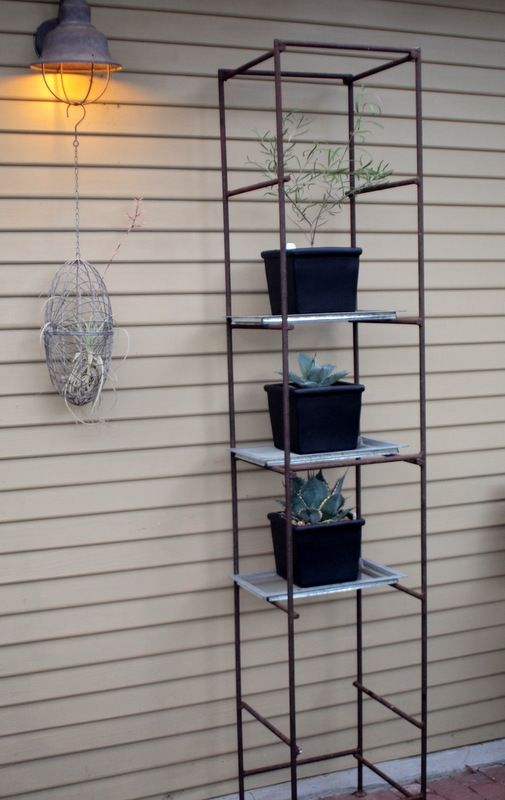
The nice thing about this arrangement is that it tucks under the eaves and keeps the pots dry during winter.
Not a big deal considering our underwhelming rainy season, but still a minor consideration.

It made sense to put the planter with Senecio radicans up there, if only temporarily, since it needed the height to drape.
Doubling up the lower pots made sense for better weight distribution — and maybe because I brought home another agave (‘Little Shark’).
The olearia that was at the top now sits on the bricks at the bottom.
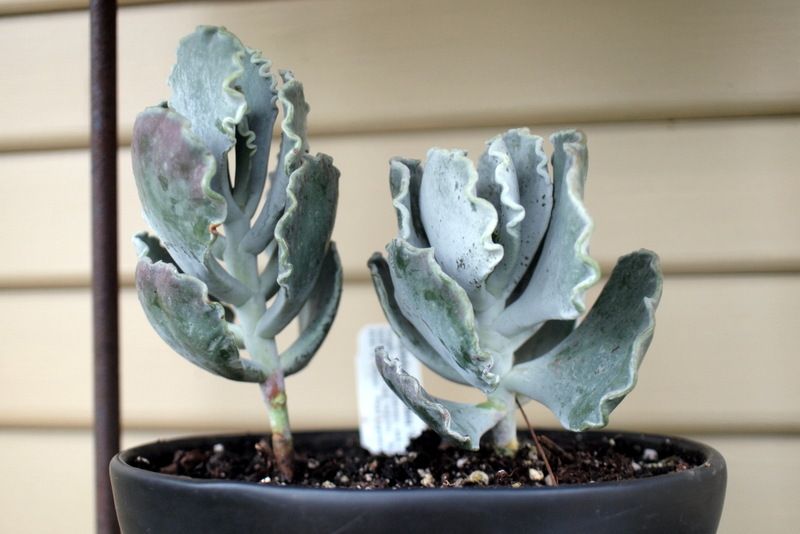
Cotyledon undulata ‘Silver Crown’ in a small, shallow bowl was another obvious candidate for these shelves. More reshuffling required.
I’ve started doing something I swore I never would — keeping the plant tags displayed. My memory is pure sheizen these days.
Note to self: buy more gravel mulch.
This winter (like last winter) I really want to get to work on some proper shelving.
We’ve been watching an old Swedish detective show, Wallander, which is subtitled in English. I’m crazy for that soft, muted Swedish light, which I can only imagine is similar to what we’ve been getting the past few days, creating a pale backdrop for the tetrapanax’s lengthening candelabra of flower buds. Pearly, opalescent — all good words for describing the light the past couple days. I love catching up on garden blogs this time of year, now that we’ve all turned that corner past summer, the fascinating descriptions of how the dream of the perfect summer garden is suspended for a short while, to be picked up again next spring. So much momentous stuff happens to a garden in fall. The first rains, first frost, fall color or a lack thereof. For me every summer is another lesson in existentialism, a sweaty season to be experienced moment to moment. Fall feels like taking charge of destiny again, making plans. I will go here, do this, that, and the other thing. If summer is body, autumn is mind. Spring is emotion. Winter is…I don’t know. For dreaming?
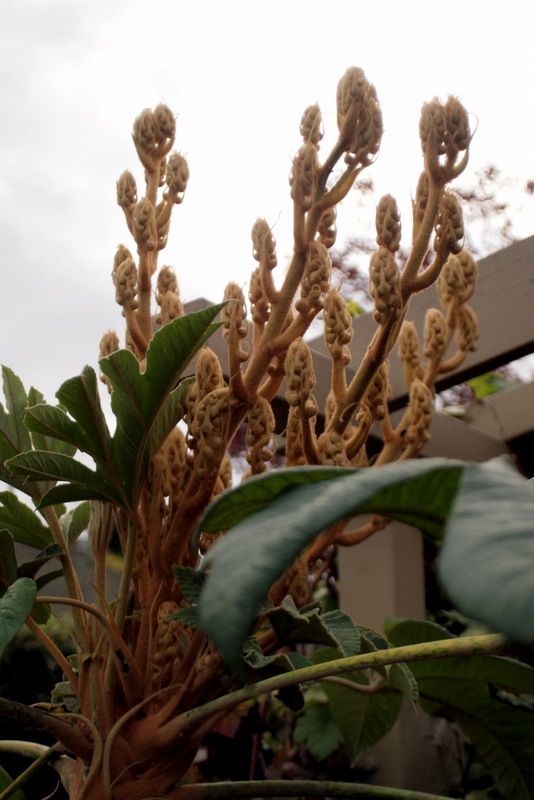
Here we’re all reviving under these much kinder skies. Echeveria imbricata, plumped up and refreshed.
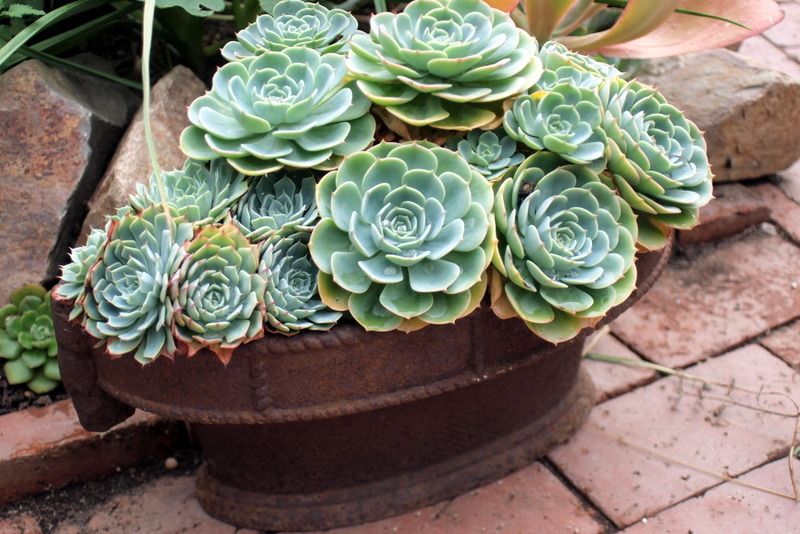
Euphorbia lambii’s leaves have finally stopped drooping and yellowing.

The Eryngium padanifolium made good size this summer, bottom left. Those whipsawing, strappy leaves have the sinuous vitality of an octopus. Agave desmettiana ‘Joe Hoak,’ on the table, has been moved back into the gentler version of full sun offered in late October.

The mist was heavy enough this morning to make the coronilla look like this.

We’ve all started to come out of the shade and back under a much kinder sun.
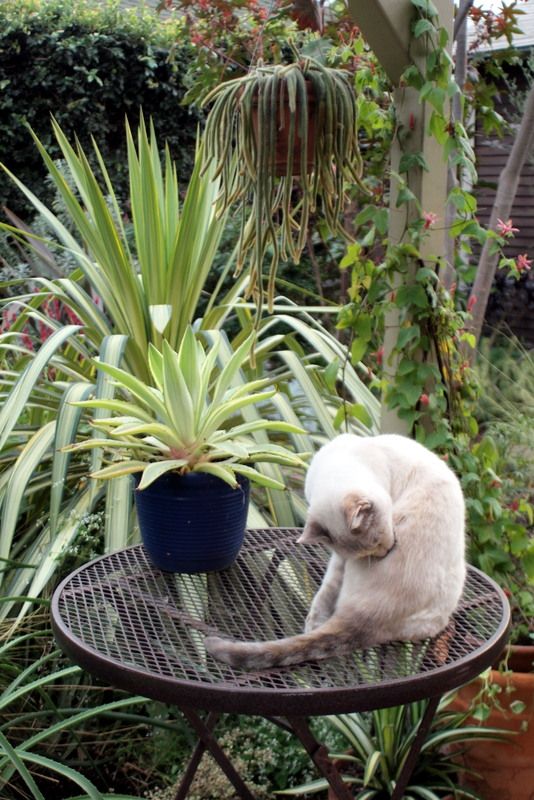
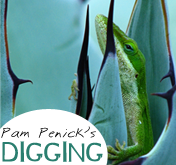
Hosted by Pam Penick at Digging
Two of the great memes in garden bloggery, Bloom Day on the 15th and the Foliage Followup on the 16th. Pam’s photo above of an anole in her Austin, Texas garden suggests a third meme, for wildlife, which would really ratchet up demands for a good camera kit and a steadier hand and eye than my own. Just throwing the idea out there (Deanne, yoohoo!)

I did go back to Brita’s this weekend for the Albizia ‘Summer Chocolate’ and will have to see how this potential 20-footer likes being kept in a container. (The fate of Brita’s nursery is still undecided at this point, which I wrote about here.)

Arundo donax ‘Golden Chain’ has been very slow to establish. It’s reputed to lack the thuggish ways of the species, and so far this has been borne out by its performance in my garden, for which I’m so grateful. I’d hate to give it up. Hardy to zone 7, maybe 6.
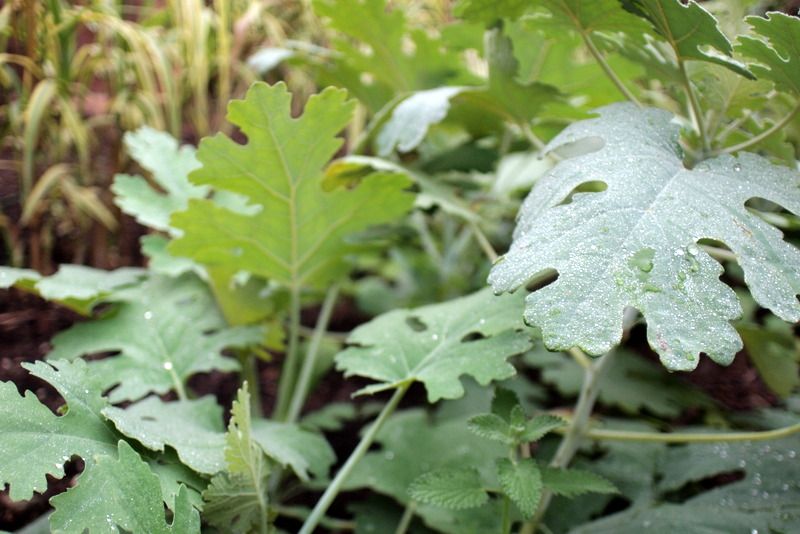
The arundo shares ground with Macleaya cordata, which is definitely fulfilling its reputation for having adventurous roots.
I haven’t grown macleaya in quite a while and missed having those enormous, scalloped, jade-green leaves around, especially on foggy mornings like this one.

An agave must be included, and this is one I don’t post about too often.
The striations of Agave americana var. striata are almost too subtle, but as it matures they are getting more pronounced.
The overall hazy blue-green effect is lovely, reading much better at a distance.
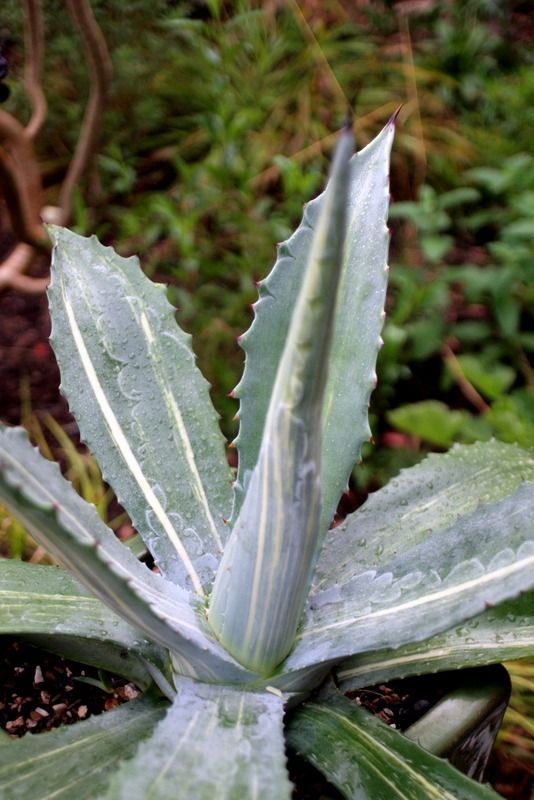
This agave has been relatively slow growing for an americana and hasn’t even pupped yet, another mark in its favor.

Sonchus canariensis growing lush in October. A member of the asteraceae/sunflower family, it will bloom with dandelion-esque flowers in spring.
A pup of Agave ‘Kara’s Stripes’ was tucked in at the base of the pot.
Full sun, easy on water, not too big in a container, 6-8 feet.
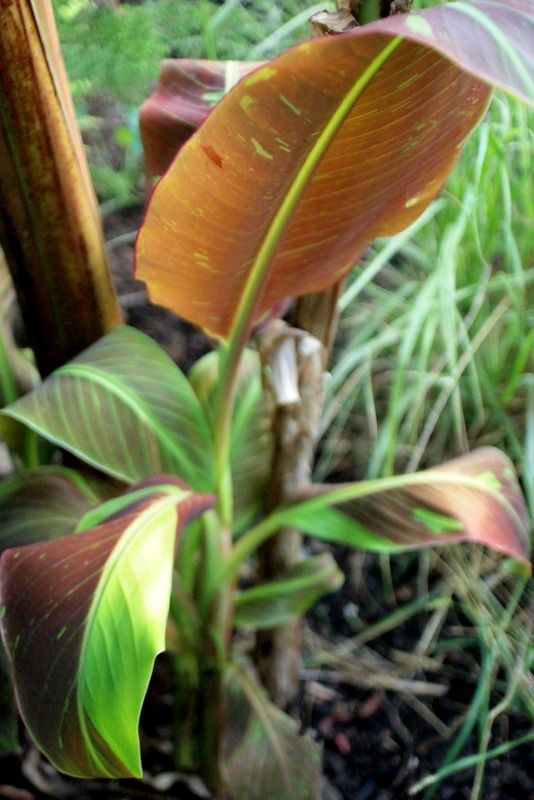
The banana Musa ‘Siam Ruby’ likes it hot, even for a banana, and really started to enjoy life when the days pushed into the 90s and stayed there. Not much action from it until the high temps kicked in.
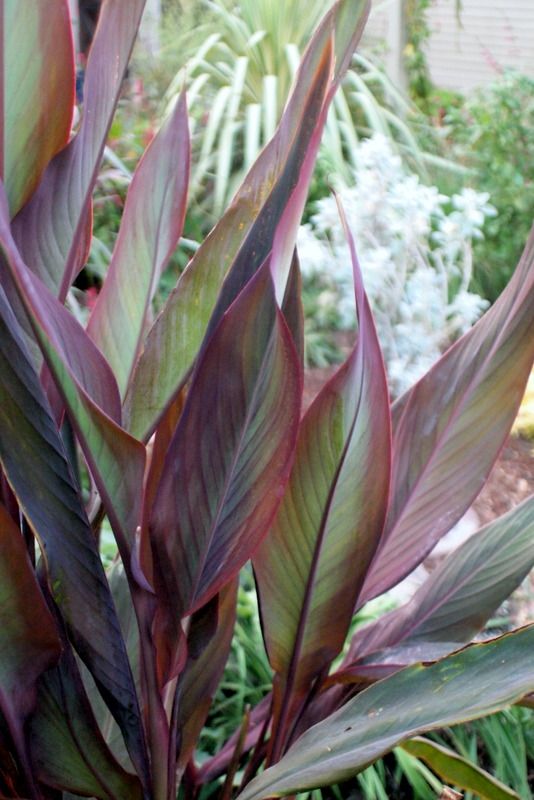
Canna ‘Intrigue’ has been moved probably more than any other plant in the garden. On the plus side, it’s relatively slim for a canna, but it still thickens up fast and quickly crowds other plants. This is new growth since being transplanted in August. The last canna in the garden. I love them, but they’re unabashed garden hogs.

And, lastly, not a great photo but one that shows the size of my wonderful Tree Cabbage, Cussonia gamtoosensis, which I described in more detail here. The more common Tree Cabbage, Cussonia paniculata, has been in its 6-inch pot forever, at least a couple years, finally managing to push out a set of new leaves this summer from its swollen base, still without a proper trunk, but nothing fazes the Gamboos Cabbage Tree. I’d definitely recommend this more robust tree cabbage for pot culture in colder zones.
Thanks again, Pam, for giving leaves in their infinite and fascinating variety a day of their own.
A nice little rainstorm rolled into town last Thursday. For a sweet, brief moment, it almost seemed like autumn, but the heat has returned this week. Still, the garden has had a reasonable soaking, a rare thing for October, which is helping to settle in the new fall plantings. Much of the summer 2012 garden has already been changed out and replanted. Tough choices have been made to kick out nice plants like Amicia zygomeris in favor of trying out newcomers like Diascia personata, and there’s quite a bit of soil showing, another rarity here, but lots of familiar faces have been left in place for next year.
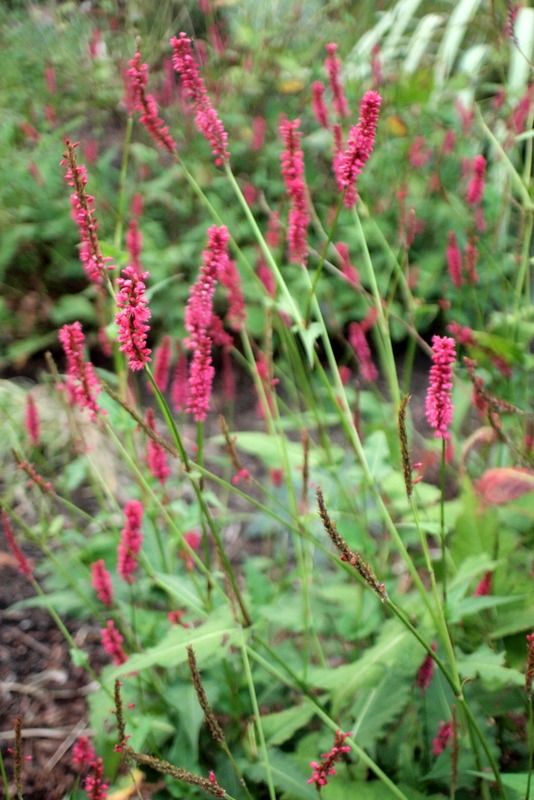
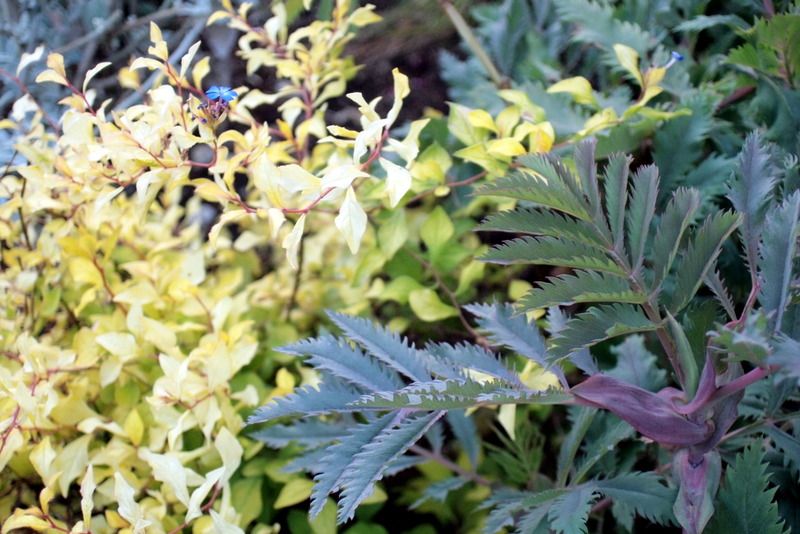
Melianthus ‘Purple Haze’ seems to be a much meeker sort of melianthus, not at all vigorous and prone to leaping to 6 ft in a season, which is a good thing here, but it may not be robust enough for iffier zones. I’m very happy with its performance, which lives up to its reputation for compactness, though it did seem to languish in the heat more than other melianthus I’ve grown. One tiny blue flower is showing, I swear, for this Bloom Day on that golden ceratostigma, which suffered horribly in full sun after the smoke tree was removed.
.
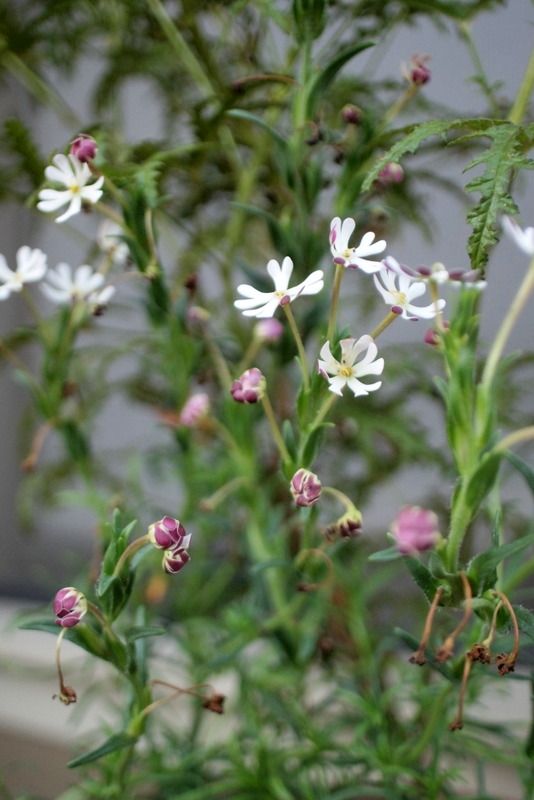
This is cheating, I know. I picked up this Zaluzianskya capensis a month ago already in bloom.
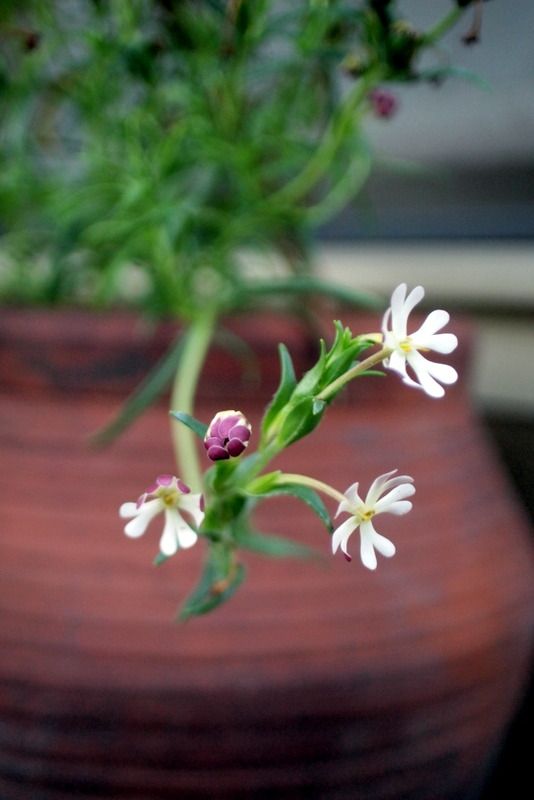
The scent of this infamously fragrant plant so far eludes me, but I’d grow it anyway for its trailing habit and those wine-colored buds that unfold into little white pinwheels.
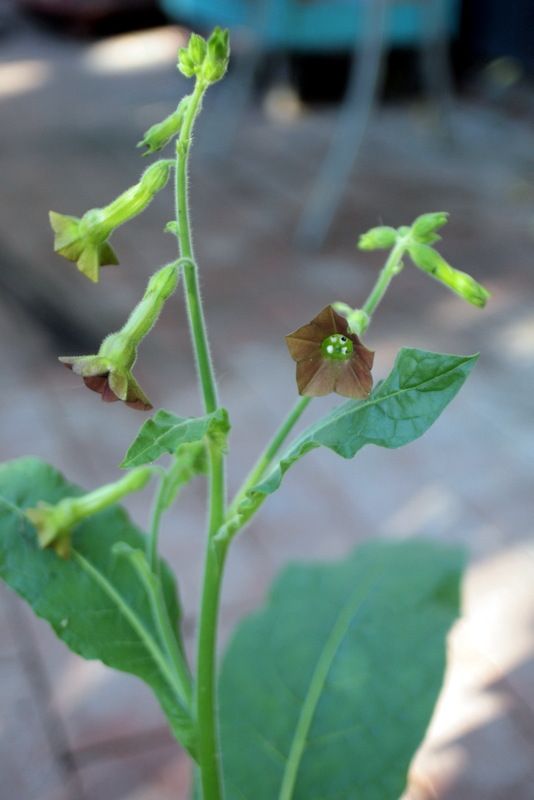
Nicotiana ‘Ondra’s Brown Mix’ started from seed last spring generously donated by Nancy Ondra of Hayefield. The plants are just now bulking up and blooming. Nicotiana would probably rather be started in fall here, since they definitely bloom better in the cooler weather of spring, but they can easily damp off as seedlings over winter. A bit tricky to find the right balance for them. Nicotianas can be short-lived perennials here, and I’m hoping this nice strain will bloom a bit this fall then rest up over winter, to return next spring. That’s my plan anyway — we’ll see what they have in mind.
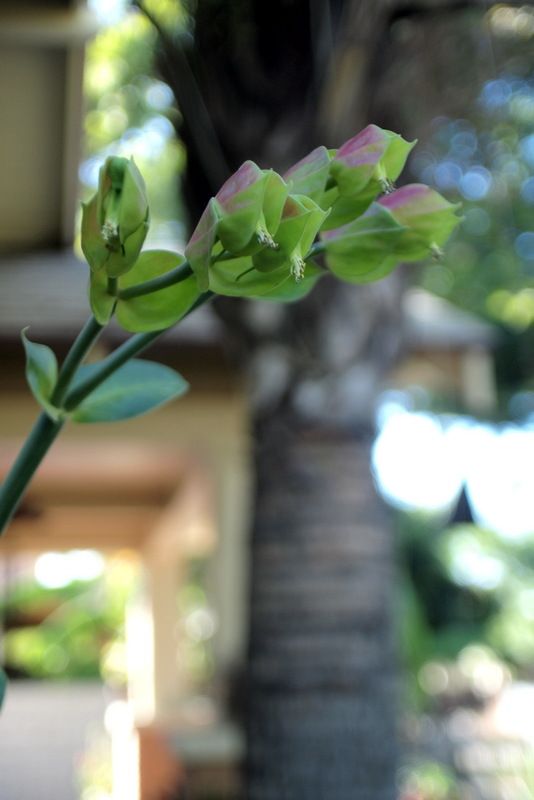
Although it’s been blooming for months, I haven’t included the tall Mexican succulent Pedilanthus bracteatus in prior Bloom Day posts because — well, it is so very tall now, over 6 feet, that it’s difficult to get photos of the blooms.
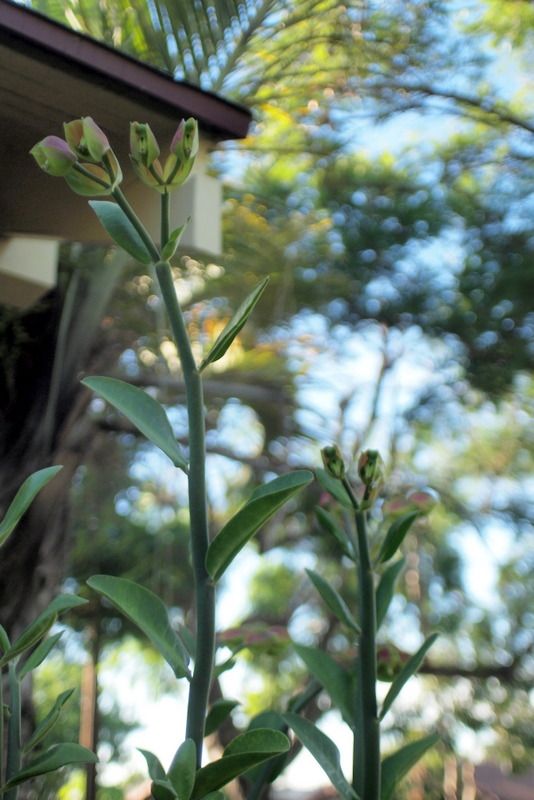
This is a marvelous plant for sunny, dry gardens, with a profile similar to ocotillo but without the spines.
It’s completely indifferent to a watering schedule.

The coloring on the bracts is not as strong as it could be, and it really should be moved out of its pot and into a patch of the driest, sunniest ground, which at the moment is in short supply. I’ll be pondering where to show this beauty off to its best advantage. It does lose all its leaves in winter.
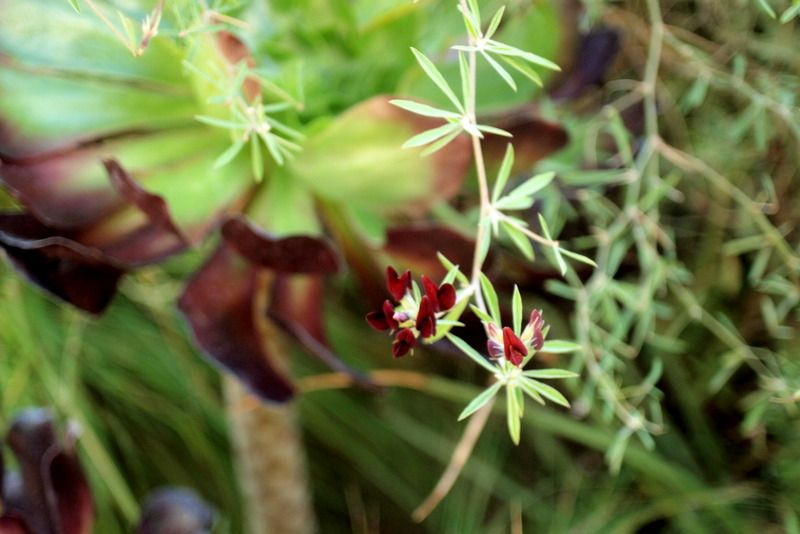
Lotus jacobaeus has started blooming again in October.
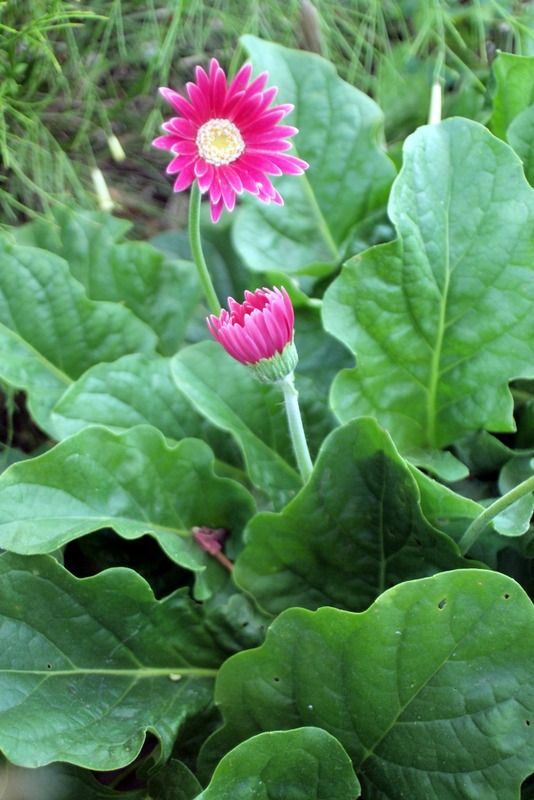
As has the Gerbera ‘Drakensberg Carmine.’ I wish I could find the peach colors of this good garden strain, because it’s been an amazingly good plant here, blooming since early spring, only going bloomless in the hottest weather.
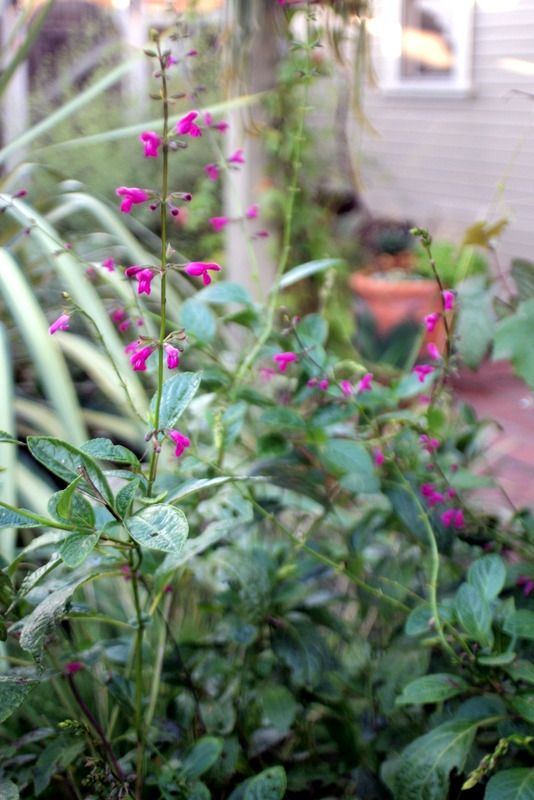
The salvias in bloom are Salvia chiapensis.
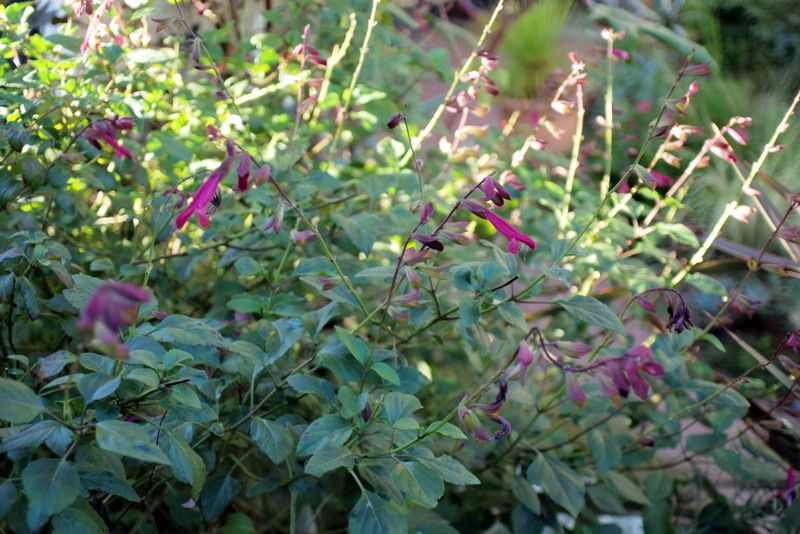
And the remarkably long-blooming Salvia ‘Wendy’s Wish’
The WordPress blogging platform that hosts AGO suffered a catastrophic system failure over the past few days. I understand very little about what caused the problem, but only know that a very nice person named Matt at Apis Networks acted as my intermediary with the angry computer gods. After the gods stopped hurling lightning bolts at WordPress and the smoke cleared, the irrevocable damage appears to be just one blog post gone forever, the one on the annual vine Mina lobata.
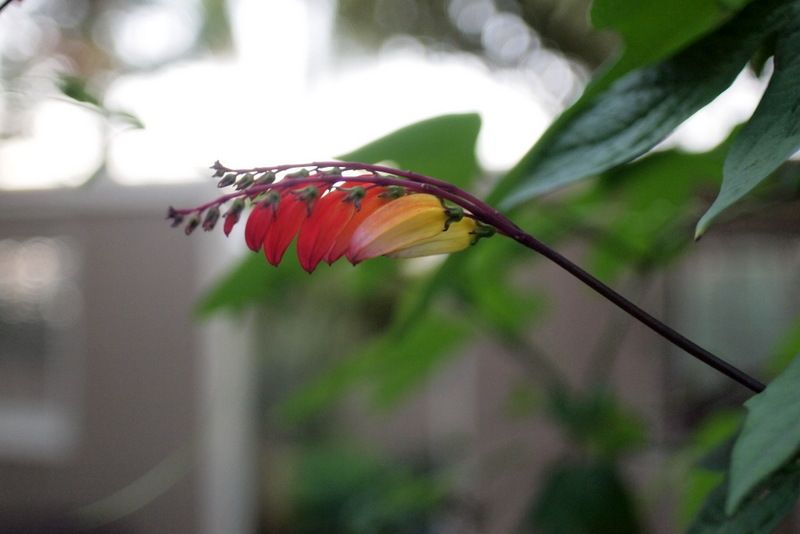
Sunday the 85-ton space shuttle Endeavour arrived at its final resting place at the California Science Center, after crawling through Los Angeles’ streets at a speed of 2 mph all day Friday and Saturday, while a lone sky diver hurtled 24 miles back to Earth at speeds over 800 mph.
A weekend to ponder our technological journeys perhaps? I know I did.
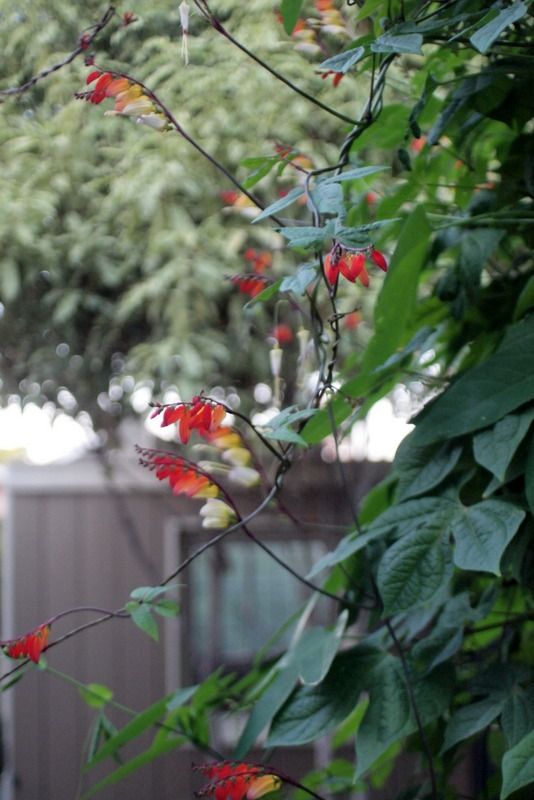
The gist of the post on Mina lobata was that it wilted in its afternoon western exposure all summer, which is what it is doing again, as temps crawl back up into the 90s. And that I like this candy corn-colored vine a lot.
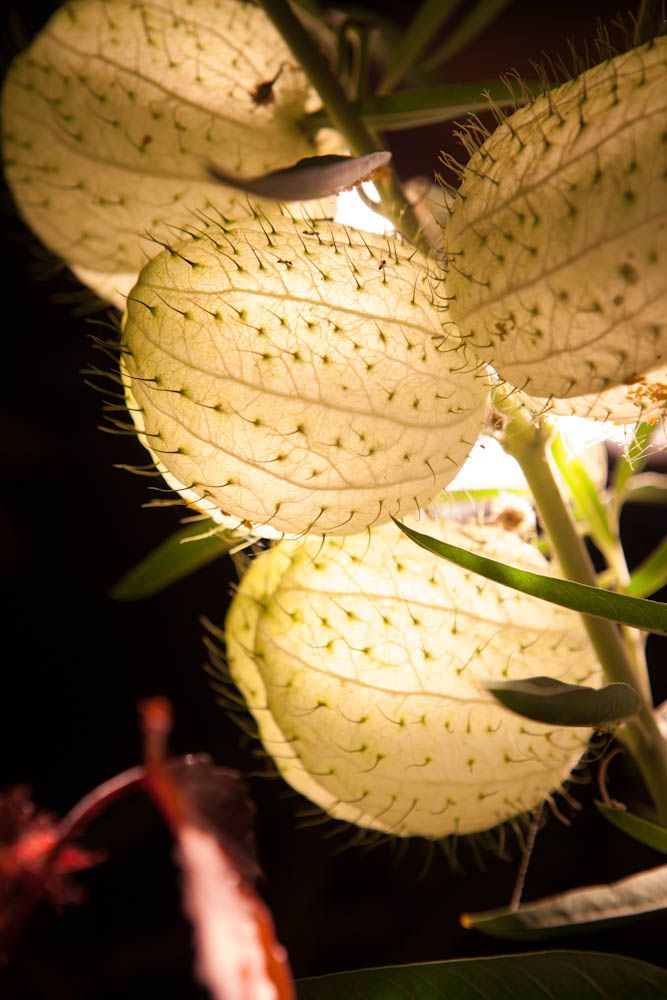
Another “light painting” by photographer MB Maher.